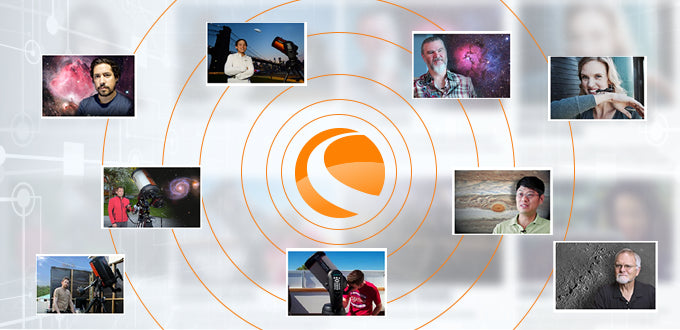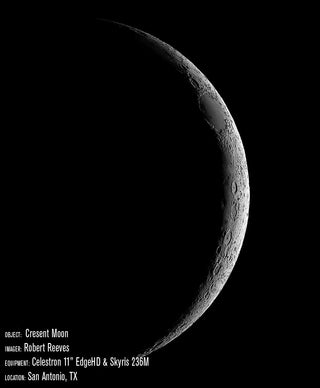One Sky, Two Worlds, One People
April 24, 2019
In March, my wife, Mary, and I took the trip of a lifetime. I was invited by the TSL Foundation in Kowloon, China, to give six presentations in five different cities in China where I was the first westerner to speak about the Moon to the Chinese astronomy community. For nearly two weeks, Mary and I were escorted around Hong Kong, Macau, Beijing, Guangzhou, and Shenzhen and given what can only be described as “rock star” treatment.

This amazing adventure began in October of 2017 when I was speaking at the Advanced Imaging Conference in San Jose, California. At that event, I was invited by Tommy Tse to come to China and address the astronomy community there. Tommy is an avid astronomer and one of the owners of 400 TSL jewelry stores in China. Part of the TSL jewelry empire is the TSL Foundation that brings astronomy authorities to China to help elevate the expertise of the Chinese astronomy community.

After a 16-hour flight and getting acclimated to 10 time zone changes, we arrived in Hong Kong. Mary and I were able to enjoy plenty of attractions throughout our stay like the Big Buddha, the Great Wall, and the Forbidden City.
My first of lecture took place at the Hong Kong Space Museum where I was taken aback by the reception, enthusiasm, and generosity of the Chinese astronomy community. I have always believed astronomers from all over the world want to advance science for the betterment of mankind and I found this to be very true in China. Although I was brought to China to improve the local understanding of astronomy, I was instantly overtaken with a culture that devours technology, values education, and was enthusiastic about science. It was refreshing to see such young and excited audiences eager to learn.

While visiting the Hong Kong Space Museum, I met a true inspiration in my astronomy career, Shan Wong. Shan Wong, a Hong Kong resident known in the scientific community as KC Pau, is a lunar photographer whose work inspired me a decade ago to pursue my own high-resolution lunar photography. It was poetic that his inspiration led me to achieve the recognition in the lunar field that, in turn, led to my trip to China where we met in person.

The next day we took a high-speed hydrofoil ferry to Macau for my second presentation. The city was absolutely delightful reminding me of my childhood with a heavy Portuguese influence. My presentation took place in one of the most modern planetariums I have ever seen. It was fun, that after the lights went out, I was able to sit back in the audience and deliver my presentation with a wireless microphone as my lunar images projected on the huge dome.
Our third stop took us to Beijing, where my third lecture was delivered at the headquarters of the National Astronomy Observatory of China. I did not know in advance, but my presentation was broadcasted across China on live television. No pressure there! To top off this amazing day, we visited the Xinglong Observatory located several hours from Beijing. Among a dozen other world-class telescopes, this observatory complex is home of the Large Sky-Area Multi Object Spectroscopic Telescope, or LAMOST. The building housing the telescope was locked up during the day, but it was a thrill being at the facility, which is one of the largest telescopes on Earth.

While in Beijing, I had the honor of visiting the editorial offices of the National Astronomy Magazine of China and received a private tour by Dr. Qiu Hong Yun of his QHYCCD astronomy camera facility.
After three days in Beijing, we flew to Guangzhou. Here I spoke to the local amateur astronomers in the Guangzhou Astronomical Society. What amazed me was the technical depth of the questions advanced by the younger kids in the audience. They were tough to answer! The heart of Guangzhou was also an incredibly futuristic looking city that reminded me of a distant science fiction future. A highlight was ascending the 444-meter high Canton Tower and gazing down on the city from a quarter-mile altitude.
The next day we took a high-speed bullet train to Shenzhen where I addressed an audience at the Harbin Institute of Technology, which is China's equivalent of our MIT! Shortly after the talk, many audience members asked for my autograph and I was stunned to recognize the names of some truly world-class astronomers that preceded my signature in many autograph books.
I also had a chance to visit the Shenzhen Observatory, which is located on a beautiful high ridge overlooking the South China Sea. Sadly, the facility had been struck by a vicious typhoon six months earlier and portions of it had been destroyed. Two of the three domes have been repaired, but the instrumentation was still being refurbished. Temporary portable solar telescopes are now in operation.

A trip by car took us back to Hong Kong for our final two days in China. Here we enjoyed an unexpected hotel upgrade where we stayed in a three room, two bath suite at the same hotel the President of China stays in when he is in Hong Kong. A highlight of the suite was a mesmerizing panoramic view of Victoria Harbor from our 17th floor window.

On the final day in Hong Kong, I delivered a four-hour workshop about telescopic lunar photography to a packed auditorium. I was impressed by the enthusiasm and high quality of the equipment used by the Chinese amateur astronomy community. I am convinced China is a sleeping scientific giant that is on the verge of awakening and taking a dominant role in future technical and scientific endeavors.
Everywhere we went in China our hosts, be it the local amateur or professional astronomy community, or businesses like TSL Jewelry, QHYCCD, or the Chinese astronomy magazine, treated us like royalty. We could go anywhere we wished, though sometimes had to show our passport.
My head was swimming on the long plane ride back to Los Angeles. During my two week visit I saw an amazing modern China I did not know existed. In China I met many fascinating friendly people who were eager to learn about the universe. China got a late start in the modern technical revolution and they are not afraid to catch up, and excel, in the sciences. I pray that we will enter the rest of the 21st Century with the Chinese as our friends and not adversaries. The China of today is not the China of a generation ago. They are smart, technically savvy, and ready to tackle the future. I am truly grateful for the opportunity to experience what an amazing place China has become.





























